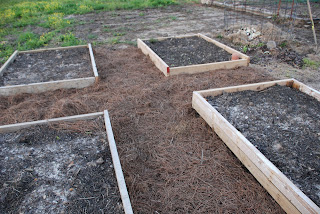
Spurweed (Soliva pterosperma) is a winter annual weed that germinates early in the fall. As temperatures warm in the early spring, spurweed initiates a period of rapid growth and begins to form spine-tipped burs. The sharp-tipped spiny burs of this weed can cause minor irritation to the skin. Key identification characteristics of spurweed are: 1) opposite, sparsely hairy leaves that are divided into numerous segments, or lobes, b) small, inconspicuous flowers, and c) spine tipped burs that are found in the leaf axils (junction of leaf and stem). Spurweed attains an overall diameter of up to 6 inches and a height of about 3 to 4 inches. It is commonly found in the Southern half of Arkansas.
Spurweed can be easily controlled during the winter months. December, January and February are ideal months to apply herbicides for the control of this weed. However, the weed can also be effectively controlled in March in most areas of Arkansas. On non-overseeded bermudagrass, Aatrex (a Restricted Use Herbicide), simazine (Princep, others) and Sencor Turf will effectively control spurweed. This group of herbicides should not be used on bermudagrass overseeded with a cool-season turfgrass or on tall fescue, as they are injurious to cool-season turfgrasses. The best option for control spurweed control by homeowners is a postemergence application of one ofe the various two and three-way mixes of 2,4-D, dicamba and MCPP. Trimec is one of the most common trade names in this category. These products can be used on tall fescue, fall overseeded bermudagrass in which the overseeded cool-season grass has been mowed four to five times and non-overseeded bermudagrass. This group of products should be applied on a warm (air temperatures at least 55 degrees Fahrenheit), sunny day. Two to three weeks after the initial application, spurweed control should be evaluated. If control is not acceptable, an additional application may be necessary.
The key factor to effectively controlling spurweed is to apply an appropriate herbicide during the winter months. Spurweed is small and easier to control at this time of the year than in April and May. Also, turfgrasses are not actively growing during the winter months and have better tolerance to some herbicides. Spurweed can be controlled in late-March, April and early May. However, two main facts should be considered. Spurweed begins to die as late spring temperatures approach 90 degrees Fahrenheit and the plant is harder to control once the spiny burs or stickers have formed. Multiple herbicide applications are usually necessary, which increases the risk of temporary injury to the turfgrass. Additionally, it takes time for the herbicide to control spurweed, and after death, it takes time for the dead spurweed plants to decompose. Therein lies one of the main problems with late treatments. Dead spurweed plants contain dead, or brown spine-tipped burs. Dead or alive, the spiny burs still present a problem. The only recourse at this point is to allow time for the plant to decompose.










